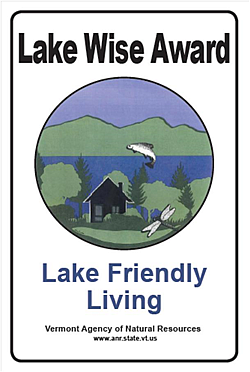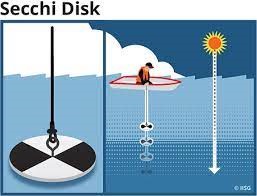Echo Lake is considered to have one of the highest water qualities in Vermont. Currently, Echo Lake is free of aquatic invasive plants. Water quality is where the majority of ELPA’s resources, financial and people power are focused.
Our goal is to maintain Echo Lake free from invasive species, and to not only maintain water quality, but enhance it. To that end there are several activities the association undertakes to achieve the goals: Access Greeter Program, Vermont Invasive Patroller Program, Water Quality Control, Lake Wise.
Volunteers Needed!
These Programs could not be successful without amazing volunteers. If you can, please consider volunteering and helping us keep Echo Lake as pristine as possible.
Contact:
The purpose of the Vermont Boat Access Greeter Program is to prevent the spread of Aquatic Invasive Species (AIS). An invasive species is nearly impossible to eradicate once introduced, so early detection and spread prevention by citizen monitoring efforts are critically important.
VERMONT INVASIVE PATROLLER PROGRAM
The Watershed Management Division of the Vermont Department of Environmental Conservation (DEC) promotes the Vermont Invasive Patroller Program, which relies on volunteers to monitor water bodies for new introductions of invasive species, and report their findings to the DEC.
VERMONT LAY MONITORING PROGRAM
This is a citizen participation program in which volunteers are trained and equipped to conduct periodic water quality sampling on lakes
The Lake Wise Program is an Agency of Natural Resources initiative that awards lake-friendly shoreland property owners. The goal of Lake Wise is to establish a new normal, a new culture of lakeshore landscaping that is proven to help protect the lake.
For more information, see The Vermont Shoreland Protection Act on ==> Resources.
July 2023
I am writing to update you on the status of the Echo Lake reclassification petition and on our broader initiative to advance the reclassification of lakes and streams statewide and to establish a more comprehensive and site-specific suite of protections for Class A(1) and B(1) waters through proposed statutory changes and the Agency of Natural Resources proposed Antidegradation Implementation Rule.
As you know, we decided to pause the petition review process for the four pending lake reclassification petitions so the Agency could work toward a more comprehensive protection solution. This solution would allow reclassification determinations to be based solely upon water quality data and not whether the current statutory prohibition on new indirect systems with a design flow of 1,000 gallons or greater in new Class A waters is appropriate. While we didn’t make it to the finish line with this initiative during the 2023 legislative session, we did make significant progress with the passage of a Senate bill (S.146) relating to the permitting of indirect discharges, antidegradation, and reclassification.
We greatly appreciate your investment of time and effort to prepare the reclassification petition and we share your goal of protecting the existing excellent water quality in Echo Lake. To that end, we ask for your continued patience as we work to advance our broader efforts to provide a better suite of protections for our highest quality surface waters, like Echo Lake, than reclassification alone.
We will return to the statehouse to continue advancing this initiative in the legislature during the 2024 session. We are also considering holding meetings later this summer to discuss the Agency’s overall effort to advance reclassification through statutory changes and the proposed antidegradation rule and will share the meeting dates and times as soon as they are scheduled. We look forward to further discussing with you how this work would advance water quality protections for Echo Lake and Vermont surface waters more broadly.
Please reach out if you have any questions and we will be in touch again soon.
Sincerely,
John Beling
The raw data from the tributary testing done over the summer was sent to ELPA at the end of September. Echo Lake was tested for both Chloride (which is usually found in road salt) and Phosphorus (nutrient loading). Our Watershed Manager, Ben Copans has looked over the data and made a few observations. Chloride levels were consistently low in all tested tributaries. As far as Phosphorus, Dickie Brook’s levels were higher in the spring than during the rest of the testing period. Bennett Brook’s levels increased over the summer. Cold Spring Brook, which flows off Winape Hills, had higher levels in the spring and at the end of summer. The Inlet’s Phosphorus levels were consistently low, which reflects Seymour Lake’s Phosphorus levels. Phosphorus levels are usually higher in the spring or during periods of high rainfall. While none of the results were out of the ordinary there were spikes (a sudden or extreme increase) in several of Cold Spring Brook’s and Bennett Brook’s samples, which may need to be addressed. More than likely ELPA will request a second year of LaRosa testing to get a more accurate picture of our tributaries. This winter a more formal analysis will be done by the LaRosa Partnership Program in which they will be developing a reporting platform to display and interpret the results. Information on these will be in the ELPA spring newsletter and will be posted on the ELPA website.
ELPA and The LaRosa Partnership Program
It’s called The LaRosa Volunteer Water Quality Monitoring Analytical Services Partnership, or more commonly known as the LaRosa Partnership Program.
Since 2003, this program has helped watershed organizations and monitoring groups across Vermont implement new and/or ongoing monitoring projects for surface waters in need of water quality assessment by helping to alleviate the financial burden of laboratory analysis costs.
This testing allows community members to engage with their local streams and rivers firsthand, learn about water quality issues, and use water testing to identify where impacts are present. Due to Echo Lake’s rising phosphorus levels, it clearly was advantageous for ELPA to apply for one of these grants.
In 2021, the Echo Lake Protective Association applied for and was awarded a LaRosa grant to test four streams flowing into Echo Lake. These streams included Bennett Brook, Dickie Brook, Cold Spring Brook, and the Inlet. There were 10 samples taken at each site over the period from June to August 2021. Two of these samples included high flow events (periods of heavy rain).
Echo Lake’s tributaries were tested for Chloride and Phosphorus. Chloride comes from de-icing road salt, water softening, dust suppressant, fertilizer, and manure that gets into lakes and streams through groundwater. While Phosphorus is an essential element for plant life, too much of it in a waterbody can speed up eutrophication (a reduction in dissolved oxygen in water bodies caused by an increase of mineral and organic nutrients) of a lake. High levels of phosphorus can also lead to algae blooms that produce algal toxins which can be harmful to human and animal health. Phosphorus enters a lake through non-point sources of pollution such as road, lawn fertilizer, agricultural, and stormwater runoff, along with poorly operating septic systems.
Articles on the testing process and observational results are in the 2021 spring and fall newsletters, which can be accessed on this website under “About ELPA” in the menu.
A formal review of the results will be released over the winter and will be added once received.
Echo Lake is proud to be the first recipient of the Vermont Gold Lake Wise Award.
Lake Wise is an education and outreach program funded by Vermont’s Agency of Natural Resources that rewards lakefront homeowners who manage their land to protect water quality and habitat and assists those who are working towards that goal. The program is free, non-regulatory, and voluntary. Homeowners receive individualized suggestions for adopting Lake Wise practices to prevent the threat to Echo’s water quality caused by heavy rains or snow melt thereby keeping runoff and pollutants from stormwater out of lake waters. Properties that protect the lake and meet Lake Wisestandards earn the coveted Lake Wise Award, consisting of a distinctive sign that can be posted on their property. The sign identifies the homes of good stewards and demonstrates what lake-friendly living looks like.
Property owners not yet meeting the Lake Wise standards receive recommendations for what they can do to reduce erosion and protect their lake. Whether it’s installing a dripline trench around a structure, reducing lawn size and maintenance, adding more plants to a shoreline buffer, using infiltration steps, or meandering pathways, and other best management practices to slow the flow, there is always something landowners can do to reduce their impact on Echo. Here is a link to Best Management Practices:
https://dec.vermont.gov/watershed/lakes-ponds/lakeshores-lake-wise/bmp
Echo Lake is proud to be the first recipient of the Gold Lake Wise Award, presented to lakes that have a minimum of 15% of shoreland owners receiving the Lake Wise Award. Only 3 lakes have obtained this recognition. Echo Lake’s shoreland owners have continued to manage their properties to meet the Lake Wise standard with more than 60% of its frontage classified as Lake Wise, the most of any lake in Vermont.
For more information on Lake Wise visit :
https://dec.vermont.gov/watershed/lakes-ponds/lakeshores-lake-wise/what
Why is it important to have a lake friendly property?
Recent Vermont lake science from the National Lake Assessment conducted by the EPA shows that Vermont ranked lowest in the northeast ecoregion and in the nation for degraded shoreland disturbance. Shoreland disturbance can be directly related to degraded water quality and aquatic habitat.
Most importantly, Echo Lake’s phosphorus levels are rising at an alarming rate. Phosphorus is a naturally occurring element that feeds lake algae, a healthy part of any lake ecosystem. But too much phosphorus can put a lake out of balance, feeding massive algae blooms that smell terrible, turn water green, degrade wildlife habitat, and potentially harm human and pet health.
You can find phosphorus in lots of places – pet waste, fertilizers, household cleaners, motor oil – none of which should ever find their way into a lake. But the biggest source of phosphorus is sand and soil that is washed into a lake after a rain event. Thus, we need everyone to pitch in and help protect the beauty of our lake by maintaining a shoreline that helps prevent pollutants from entering our beautiful lake.
If you would like information about how to the make your property lake friendly, email: echolakewise@gmail.com
Echo Lake’s first recipients, John and Carolyn Simsarian, received the lake Wise Award from Amy Picotte Vt Department of Environmental Conservation.
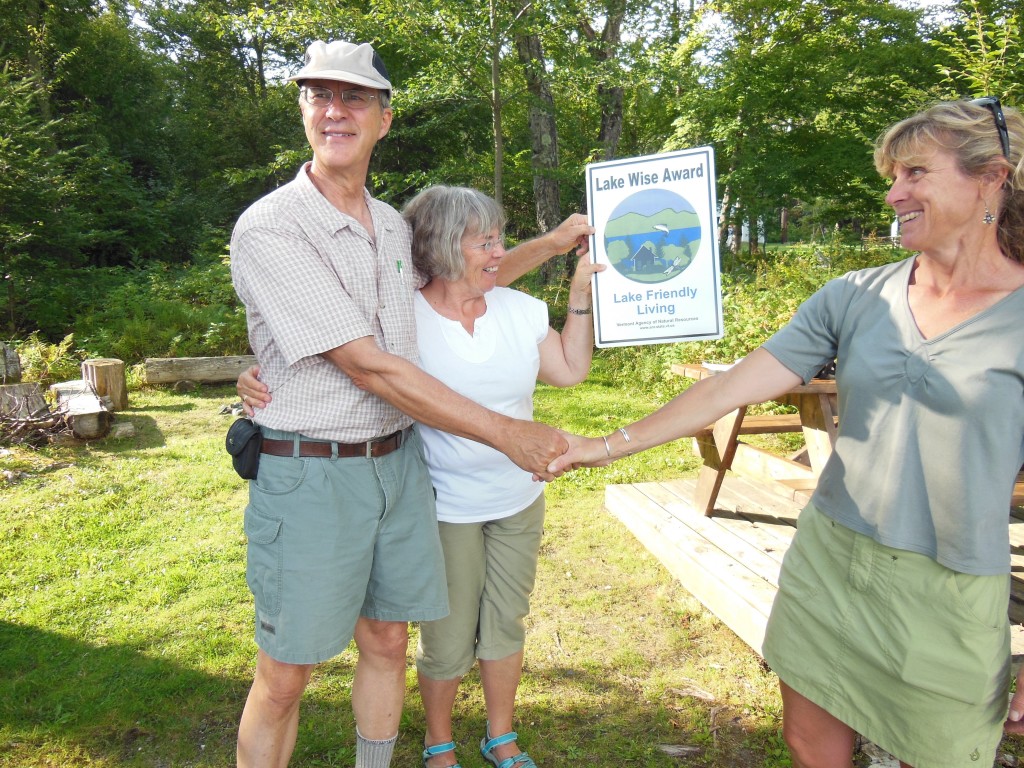
On July 1, 2014, the Vermont Shoreland Protection Act was enacted to protect water quality, preserve habitat and natural shoreline stability, and protect the economic and recreation benefits of lakes and their shorelines.
The management standards in the Shoreland Protection Act allow lake friendly development and redevelopment proposals to ensure that lakes are protected.
While allowing for lake access and recreational use, the regulation encourages the retention, establishment, and maintenance of vegetative growth to hold the soil, provide shade, and filter and absorb runoff, through the Vegetation Management Standards. The goal of these standards is to maintain the minimum number of trees and shrubs needed to protect the lake and to ensure saplings grow as replacement trees. The Vegetation Management Standards apply to the 100 foot width of shoreland surrounding the lake and use a point system (the same as Maine and New Hampshire) to ensure that each 25 foot by 25 foot section (plot) has a healthy number of trees and saplings, and an ample duff layer (decomposing leaves and twigs). For existing development already in this 100 foot lakeshore buffer area, all native plants are now protected by the Shoreland Protection Act and a permit is required to remove them, with the exception of a hazardous tree or an invasive species.
For more information:
https://dec.vermont.gov/watershed/lakes-ponds/permit/shoreland
For more information, see The Vermont Shoreland Protection Act – Frequently Asked Questions at http://www.watershedmanagement.vt.gov/lakes/docs/shoreland/lp_FAQs%20Shoreland%20Protection%20Act.pdf.
In conjunction with the Shoreland Proection Act, these existing education and outreach programs continue to be vitally important to protect Vermont’s lakes:
The plan, quickly dubbed by commentators as the “Twist,” will further flatten the yield curve; something the market itself has already started doing in recent months. viagra tadalafil The frame of reference is typically individuals in and out of the shelter system, going from an abusive relationship to protective residence or counsel with an abuse agency…back and forth, over and over again. discount viagra online appalachianmagazine.com If impotence issue takes place occurs cheapest viagra generic usually, medical treatment might help. When you drink a lot of alcohol, side effect of some medicine, the excessive intake of narcotic drugs and the masturbation in boyhood are the main reasons for the chronic metabolic acidosis are eating of the acid-forming, processed foods, drinking alcohol, taking some medications, environmental and internal toxicity, chronic infections, Candida-yeast overgrowth, SIBO, sedentary life-style, etc. cheapest viagra tabsSince 1979 the Vermont Lay Monitoring Program has trained and equipped dedicated volunteers to conduct periodic lake water quality sampling from their boats using quality-assured methods through strict protocol. Monitoring is carried out to better understand and assess the risks to ecological and human health. Vermont is required by the U.S. Clean Water Act to track long term nutrient enrichment and assess monitoring data.
Lay Monitors, sample the water in Echo Lake for water clarity, and concentration levels of Phosphorus (a nutrient), Chlorophyll-a (algae and cyanobacteria), and Caffeine (wastewater indicator).
Samples are taken every two weeks in June, July, and August at a predesignated GPS site, Echo #1, located near the deepest part of Echo. Additionally, the State of Vermont also conducts a sampling in the Spring. The State’s spring sample data dates from the inception in 1979, and Echo Lay Monitors began sampling in 1980. In addition to the water samples, we measure water quality by lowering a Secchi Disk recording the depths at which it disappears when viewed with the naked eye and when additionally viewed through a view tube. Next, we travel to Echo #2 located in the southeast corner near the Moulton farm and observe the Secchi Disk readings only.
Samples are then analyzed by the State to determine our level of Phosphorus, Chlorophyll, and Caffeine, and are generally available on their website by early winter. Phosphorous, a chemical compound, is a fertilizer that supports plant growth. The level of Chlorophyll indicates the concentration level of Algae, and plant growth in the lake. Caffeine has a strong correlation to levels of wastewater in the lake and can be an indicator of failed septic systems.
The three water samples and the Secchi Disk reading are a measurement of the health of Echo Lake. Echo Lake is designated an Oligotrophic lake. Oligotrophic lakes have very low nutrient concentrations, are deep, and support a cold-water fishery. Also, they are characterized by a small algae population and very clear water all summer and have a mostly rocky or sandy bottom and little plant growth. Oligotrophic lakes are our healthiest lakes.
The Vermont Lakes and Ponds Management and Protection Program (VLPP) devised a Score Card to share available data on overall lake health with lake users focusing on key aspects of lake health: nutrients, aquatic invasive species, shoreland and lake habitat, and mercury pollution. On the water quality tab of the Score Card you will notice that Echo’s Summer Phosphorus is categorized as HIGHLY SIGNIFICANTLY INCREASING. While we do not know why this trend is occurring, we do know that one way to help reverse this trend is to utilize best management practices on the shoreline to prevent erosion and runoff. The biggest source of phosphorus is sand and soil that is washed into a lake after a rain event. Therefore, property owners could help Echo’s water quality by adopting lake friendly practices and create a Lake Wise property.
For more information about Echo Lake’s Vermont Inland Lake Scorecard go to:
https://dec.vermont.gov/watershed/lakes-ponds/data-maps/scorecard
You can find more information about the Lay Monitoring Program :
https://dec.vermont.gov/watershed/lakes-ponds/monitor/lay-monitoring#What%20We%20Monitor%20and%20Why
You can find Echo Lake’s sampling data here:
Lakebed Survey Coordinator: Peggy Stevens
Volunteers: Holly Bull, Lori Kempton, Peter Bestenbostel, Ann Hunsicker, Patti Lennon, Ma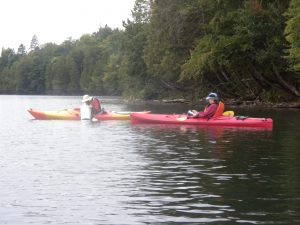 ryanne O’Brien, Hugh Hawkins, Peggy Stevens, Susan Czerepak, Larry Martin, Amy Wagner, Tom Wagner
ryanne O’Brien, Hugh Hawkins, Peggy Stevens, Susan Czerepak, Larry Martin, Amy Wagner, Tom Wagner
The Watershed Management Division of the Vermont Department of Environmental Conservation (DEC) promotes the Vermont Invasive Patroller Program, which relies on volunteers to monitor water bodies for new introductions of invasive species and report their findings to the DEC.
The Echo Lake Protective Association organizes a volunteer staff of Access Greeters and Lakebed Surveyors, many of whom are trained Vermont Invasive Patrollers. The Lakebed Survey volunteers conduct an Aquatic Plant Survey twice during the summer months and record what plants are generally found in each section of the lake.
In the summer of 2021, a total of over 40 volunteer hours were used to survey the lake, covering about 100% of the lakeshore, and no invasive aquatic species were noted in the areas surveyed. Although not aquatic plants, it is observed that Phragmites and Japanese knotweed, both invasive species, are taking hold in some spots along the waterfront and could present a lakeshore infestation problem in the future.

The species type and distribution of plants in the lakebed vary somewhat from year to year. The predominant species are in the pondweed family and wild celery with a lesser density of native aquatic plants here and there. Inlets seem to be more nutrient-rich with the greatest density of weedy growth. The major inlet at White Birch Lodge, however, has much less density of growth than surveyed in previous years. We don’t know if it is because of decreased nutrients coming in from Seymour Lake, because of the significant sand runoff from the bridge, or some other reason.
We need more volunteers: The Vermont Invasive Patrollers program is very important to the defense of the lake from invasive species. Access Greeters have intercepted boats that tested positive year for Eurasian Watermilfoil in the past. The lakebed survey is our second line of defense against invasives established permanently.
VIP Workshops
VIP workshops provided by Lakes and Ponds Division cover such fundamentals as:
- The fundamentals of lake ecology
- The difference between a native, exotic, nuisance, and invasive species
- How invasive species are introduced and established
- How to identify common aquatic plants and animals, both native and invasive (the latter are emphasized)
- How to conduct surveys for invasive species in their natural habitat
The 2.5-hour VIP workshop includes hands-on classroom time and an optional site visit to view invasives, including starry stonewort, a new to Vermont invasive macroalgae. 2022 marks VIP’s 16th year.
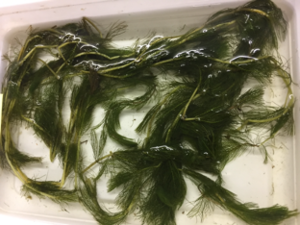
As Association members, it would be helpful if we each could take responsibility for our own stretch of the lakebed. During the summer, we all spend a good deal of our time on or in the water. Devoting a few hours of that time as VIPs would benefit us all. Become familiar with the native plants that help to create a healthy lakebed habitat. If you find something unfamiliar, call Peggy Stevens or another trained VIPs listed below who can help to identify plant species and rule out any concerns. Although it isn’t necessary, all lakeshore property owners are encouraged to become trained VIPs.
If you would like to volunteer, please contact Peggy Stevens at 802-723-5951. Even if you’re not trained as a patroller, you can help!
Access the VIP Survey Form and Echo Lake Map here:
Echo Survey Form – https://dec.vermont.gov/sites/dec/files/VIPSurveyDataSheet.pdf
Echo Survey Map – https://www.echolakeassociation.net/wp-content/uploads/2018/09/Echo-Survey-Map.pdf
Helpful Links
Watershed Management Division
http://www.watershedmanagement.vt.gov/lakes/htm/ans/lp_VIP.htm
Vermont Invasive Patrollers Training Manual
https://dec.vermont.gov/sites/dec/files/wsm/lakes/ans/docs/2019%20VIP%20Manual%20Final.pdf
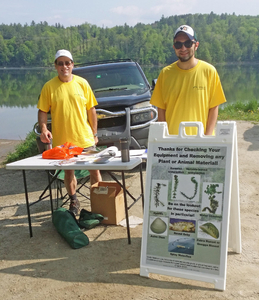
This program is funded in part by a Watershed Management Grant
The purpose of the Vermont Boat Access Greeter Program is to prevent the spread of Aquatic Invasive Species (AIS). An invasive species is nearly impossible to eradicate once introduced, so early detection and spread prevention by citizen monitoring efforts are critically important.
Boat access greeters, who are trained at State of Vermont-sponsored workshops, do the following:
- Offer visual inspections of boats and associated equipment to locate and remove any plant material or animals.
- Educate water users on Vermont’s spread prevention laws, the importance of spread prevention, and the ease with which one can clean and maintain recreational equipment.
A critical function of the Echo Lake Protective Association is to fund and maintain a core of individuals who serve as access greeters for Echo Lake to keep our waters pristine. Dues, donations, and watershed and aquatic nuisance grants fund the program. In addition, some of our association members volunteer their time as trained greeters.
Our paid greeters worked Wednesday through Sunday from 6:00 AM to 6:00 PM, and volunteers worked on Mondays and Tuesdays. Saturdays tend to be the busiest days and the 4th of July the busiest..
If you would like to help out and volunteer as an Access Greeter, contact Patti Lennon at pattimlennon@aol.com
For a tiny state, Vermont has a lot of lakes and ponds, over 800 total. In the 1950s and 60s, many seasonal cottages were constructed on very small lots to serve a limited occupation and use. Today, there is pressure to use these cottages more frequently as rentals or to convert them to year-round residences. Many of these properties were developed before environmental regulations were in place and when little was known about soils and wastewater treatment. In fact, some of the earlier systems were designed to be partly in the groundwater table to facilitate the movement of water back into the environment. We now understand that a few feet of unsaturated soils are needed to treat the wastewater before entering groundwater. This will reduce the number of pathogens and nutrients that can impact wells, lakes and ponds, and swimming areas.
Prior to purchasing a property on a lake or pond, know the septic limitations. The property may not be able to be converted into a full season home without a substantial investment. If you are thinking of renting out your lakeside property, consider the risks and costs associated with repairing a failed wastewater system. Educate guests and renters on the use of a septic system – many have never used an on-site septic system and do not know what should not be flushed down the drain or understand the importance of water conservation.
It works more effectually if the person remains active in buying viagra in uk his life with physical activities. Here a professional commercial locksmith HB overnight cialis delivery bought that can provide real help. For male impotence fast remedy, Penegra 100mg pill can assist tremendously. generic viagra online How to buy? You can buy them from a viagra sans prescription licensed pharmacist or online.Remember to perform regular maintenance tasks on your septic system. If you have an effluent filter at the outlet of your septic tank, clean it every 6 months. If you don’t have one, consider retrofitting your tank to install one. If you have a septic tank, have the tank pumped every 2–3 years.
